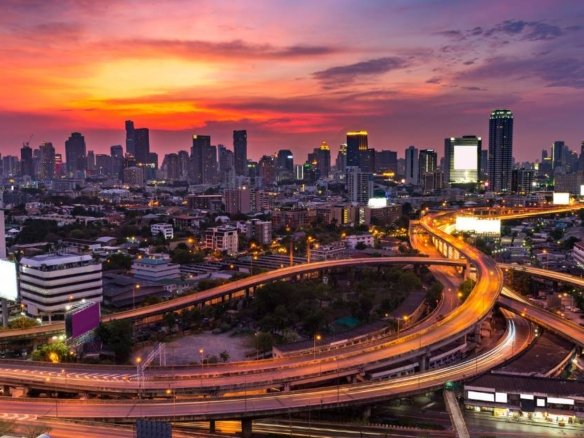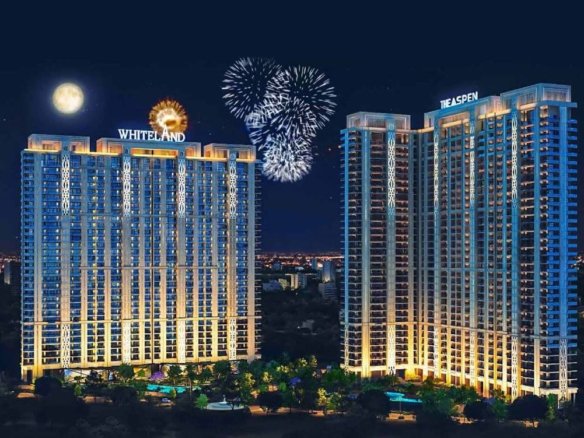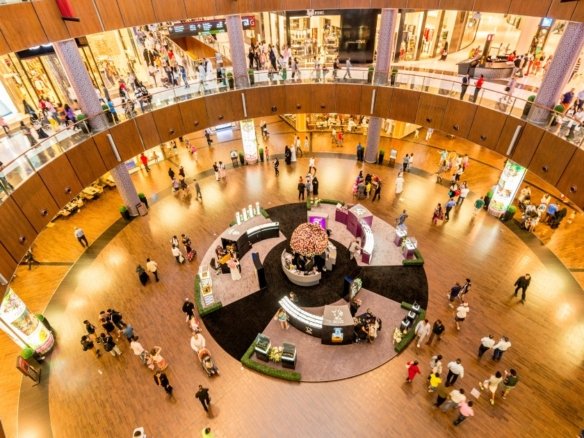Gurgaon, now known as Gurugram, is a testament to rapid urban development and economic growth in India. Over the past few decades, this city has evolved from a sleepy suburb of Delhi into a bustling urban center. Central to this transformation is the development of key infrastructure projects, among which the Southern Peripheral Road (SPR) stands out as a cornerstone. This article delves into the rise of the Southern Peripheral Road, examining its impact on the real estate market, economic growth, and overall urban development in Gurugram.
Historical Context and Genesis of SPR
Early Development and Planning
The Southern Peripheral Road, part of the broader Gurgaon-Manesar Urban Complex Plan, was conceptualized as a major arterial road aimed at decongesting the city and providing better connectivity to the southern parts of Gurugram. The plan was to create a seamless link between various sectors and major highways, enhancing the overall infrastructure of the city. The idea was to not only facilitate local traffic but also to create a corridor that would boost economic activities and real estate development.
From the inception of the idea, planners envisioned SPR as a strategic road that would cater to the future growth needs of Gurugram. The initial development and planning phases involved detailed surveys, feasibility studies, and consultations with urban planners, architects, and engineers. These efforts aimed to ensure that SPR would not only serve as a traffic conduit but also as a catalyst for comprehensive urban development.
Strategic Importance
The strategic location of SPR cannot be overstated. It connects National Highway-8 (NH-8) to Golf Course Extension Road, Sohna Road, and further extends to intersect with the Northern Peripheral Road (NPR), also known as Dwarka Expressway. This network of roads has been pivotal in providing a robust connectivity framework for Gurugram, significantly reducing travel time and enhancing accessibility to various parts of the National Capital Region (NCR).
The SPR’s strategic importance lies in its ability to distribute traffic flow more evenly across the city, thereby alleviating pressure on other arterial roads. This has made commuting within Gurugram more efficient and has facilitated better connectivity to key business hubs, residential areas, and commercial centers. Furthermore, the road’s connectivity to NH-8 has streamlined access to Delhi, making it a crucial link for businesses and daily commuters.
Phases of Development
Initial Phases and Challenges
The initial phases of SPR development faced several challenges, including land acquisition issues, legal hurdles, and funding constraints. Despite these challenges, the government and private developers worked collaboratively to push the project forward. The emphasis was on creating a world-class infrastructure that would be on par with international standards.
Land acquisition, in particular, posed significant difficulties. Negotiating with landowners, addressing compensation concerns, and overcoming legal disputes required extensive efforts from the authorities. Additionally, securing adequate funding for such a large-scale project involved multiple stakeholders, including government bodies, private investors, and financial institutions. The complexity of these initial phases necessitated a coordinated approach and strong leadership to keep the project on track.
Accelerated Development Post-2010
Post-2010, the development of SPR gained momentum. The Haryana Urban Development Authority (HUDA) and private real estate developers invested heavily in the project. This period saw the rapid construction of roads, flyovers, underpasses, and service lanes. The aim was to create a comprehensive infrastructure that would support the burgeoning real estate developments along the SPR corridor.
The acceleration of SPR’s development was driven by a clear recognition of its potential to transform Gurugram’s urban landscape. Significant investments were made in modern construction technologies and materials to ensure the durability and longevity of the infrastructure. Flyovers and underpasses were strategically constructed to facilitate smooth traffic flow and minimize congestion at critical junctions. These enhancements were crucial in preparing the SPR corridor for the anticipated surge in real estate and commercial activities.
Impact on Real Estate Market
Surge in Real Estate Developments
The completion of key segments of SPR catalyzed a surge in real estate developments. Prominent developers like DLF, Godrej Properties, Sobha Ltd, and Tata Housing launched numerous residential and commercial projects along the SPR. The area witnessed the construction of high-rise apartments, luxury villas, commercial complexes, and retail spaces. The presence of SPR significantly enhanced the attractiveness of these properties, leading to increased demand and higher property values.
The real estate boom along SPR can be attributed to several factors. First, the improved connectivity made the area more accessible, reducing commute times to major business districts and enhancing the convenience of living in SPR-adjacent properties. Second, the development of modern residential complexes with state-of-the-art amenities appealed to a wide range of homebuyers, from young professionals to families. Third, commercial developers capitalized on the strategic location to establish office spaces and retail centers, further driving demand for residential properties.
Emergence of New Residential Hubs
Neighborhoods along the SPR, such as Sector 68, Sector 69, Sector 70, and Sector 71, emerged as new residential hubs. These areas offered a blend of affordable housing, mid-segment apartments, and luxury residences. The SPR’s connectivity to major employment hubs like Cyber City and Golf Course Road made it an ideal residential destination for working professionals and families.
The emergence of these new residential hubs has reshaped the demographics and lifestyle of Gurugram. The availability of diverse housing options has attracted a mix of residents, including expatriates, senior executives, and young families. Moreover, the proximity to top educational institutions, healthcare facilities, and recreational centers has made these neighborhoods highly desirable. The integration of smart city features and green spaces has further enhanced the living experience, making the SPR corridor a sought-after location for quality living.
Commercial and Retail Growth
In addition to residential projects, SPR spurred the growth of commercial and retail developments. Numerous office spaces, business parks, and shopping malls were established along the corridor. This growth not only provided employment opportunities but also catered to the lifestyle and entertainment needs of the residents, making SPR a self-sustained urban ecosystem.
The commercial and retail growth along SPR has been driven by the influx of businesses seeking modern office spaces and prime retail locations. The establishment of business parks has attracted multinational companies, startups, and service industries, creating a vibrant economic environment. Retail developments, including shopping malls and high street retail, have provided residents with a wide array of shopping, dining, and entertainment options. This has not only enhanced the quality of life but also contributed to the overall economic vitality of the region.
Economic Growth and Infrastructure Development
Boost to Local Economy
The development of SPR had a significant positive impact on the local economy. The construction activities generated numerous job opportunities, both direct and indirect. Additionally, the establishment of new businesses along the SPR corridor contributed to the economic growth of the region. The area saw a rise in retail businesses, hospitality ventures, and service-oriented industries, further bolstering the local economy.
The construction phase of SPR brought a substantial boost to the local economy through the creation of jobs in various sectors, including construction, engineering, and logistics. Beyond the construction phase, the operational phase of businesses along the SPR corridor has continued to drive economic growth. The influx of retail and hospitality ventures has created numerous employment opportunities, while service-oriented industries have thrived, catering to the needs of the growing population. This economic dynamism has led to an overall improvement in living standards and economic prosperity for the region.
Infrastructure Advancements
One of the key benefits of SPR’s development was the improvement in overall infrastructure. The road was designed with modern amenities, including well-planned service lanes, pedestrian walkways, and cycling tracks. The development also included the installation of advanced drainage systems, street lighting, and landscaping, enhancing the urban aesthetics and quality of life for residents.
The infrastructure advancements along SPR have set new benchmarks for urban development in Gurugram. The incorporation of service lanes has improved traffic management and safety, while pedestrian walkways and cycling tracks have promoted non-motorized transport options, contributing to a healthier lifestyle. The installation of advanced drainage systems has mitigated the risk of flooding during monsoon seasons, and the enhanced street lighting has improved safety and security. The landscaping efforts, including the creation of green belts and parks, have added to the aesthetic appeal and environmental sustainability of the area.
Connectivity and Transportation
The Southern Peripheral Road has significantly improved connectivity and transportation within Gurugram and beyond. The road provides a vital link to NH-8, enabling smoother transit to Delhi and other parts of NCR. The connectivity to Golf Course Extension Road and Sohna Road has reduced travel time for commuters, alleviating traffic congestion in other parts of the city. The introduction of public transportation options, including bus services and the proposed metro extension, further enhances the accessibility of the SPR corridor.
The enhanced connectivity offered by SPR has transformed the commuting experience for residents and businesses alike. The reduction in travel time to key destinations has made daily commutes more efficient and less stressful. The introduction of bus services along SPR has provided affordable and convenient public transportation options, reducing reliance on private vehicles and contributing to a reduction in traffic congestion. The proposed metro extension is expected to further enhance connectivity, making SPR an even more attractive location for residents and businesses.
Future Prospects and Challenges
Ongoing and Future Developments
The future of SPR looks promising, with several ongoing and planned developments in the pipeline. The extension of metro connectivity to SPR is expected to further boost the real estate market and enhance the accessibility of the area. Additionally, the development of new residential and commercial projects is anticipated to continue, driven by the increasing demand for quality living and working spaces in Gurugram.
The ongoing and future developments along SPR are expected to further enhance its appeal as a premier urban corridor. The proposed metro extension will significantly improve public transportation options, making it easier for residents and businesses to commute within Gurugram and to other parts of NCR. The continued development of residential and commercial projects will cater to the growing demand for quality living and working spaces, attracting more residents and businesses to the area. These developments are expected to drive further economic growth and urban development, solidifying SPR’s position as a key driver of Gurugram’s growth story.
Environmental and Sustainability Concerns
While the development of SPR has brought numerous benefits, it also poses environmental and sustainability challenges. The rapid urbanization has led to concerns about air quality, water scarcity, and waste management. To address these issues, there is a need for sustainable urban planning and development practices. The implementation of green building norms, rainwater harvesting, and waste recycling initiatives can help mitigate the environmental impact and ensure sustainable growth along the SPR corridor.
Environmental sustainability is a critical consideration for the future development of SPR. The rapid urbanization has led to increased air pollution, water scarcity, and waste generation, posing significant challenges for the environment and public health. To address these concerns, there is a need for the adoption of sustainable urban planning practices, including green building norms that promote energy efficiency and environmental sustainability. The implementation of rainwater harvesting systems can help address water scarcity issues, while waste recycling initiatives can reduce the environmental impact of urbanization. These measures are essential to ensure the long-term sustainability of the SPR corridor and the well-being of its residents.
Traffic and Congestion Management
As the SPR continues to develop, managing traffic and congestion remains a critical challenge. The increasing population and vehicular traffic can strain the existing infrastructure, leading to traffic bottlenecks and delays. To address this, there is a need for efficient traffic management systems, including intelligent traffic signals, dedicated bus lanes, and the promotion of public transportation. The development of multi-modal transportation hubs and last-mile connectivity solutions can also help alleviate traffic congestion and improve the overall transportation experience for residents.
Traffic and congestion management is a key challenge for the future development of SPR. The increasing population and vehicular traffic can strain the existing infrastructure, leading to traffic bottlenecks and delays. To address this, there is a need for the implementation of efficient traffic management systems, including intelligent traffic signals that can optimize traffic flow and reduce congestion. The promotion of public transportation options, including dedicated bus lanes and the proposed metro extension, can help reduce reliance on private vehicles and alleviate traffic congestion. The development of multi-modal transportation hubs and last-mile connectivity solutions can also enhance the overall transportation experience for residents, making commuting within the SPR corridor more efficient and convenient.
Conclusion
The rise of the Southern Peripheral Road (SPR) in Gurugram marks a significant milestone in the city’s urban development journey. From its initial conceptualization to its current status as a thriving urban corridor, SPR has played a pivotal role in transforming the landscape of Gurugram. The road has not only enhanced connectivity and infrastructure but has also spurred economic growth, real estate development, and social inclusivity.
As Gurugram continues to evolve, the SPR corridor is poised to remain a key driver of growth and development. The ongoing and future developments, coupled with sustainable urban planning practices, can ensure that SPR continues to contribute positively to the city’s growth story. While challenges such as environmental concerns and traffic management need to be addressed, the overall outlook for SPR remains optimistic.
In the coming years, the Southern Peripheral Road is expected to further solidify its position as a vital artery in Gurugram’s urban fabric, fostering a vibrant and dynamic urban ecosystem that caters to the needs of its residents and businesses. The rise of SPR is a testament to the power of strategic infrastructure development in shaping the future of cities and improving the quality of life for their inhabitants.





Join The Discussion